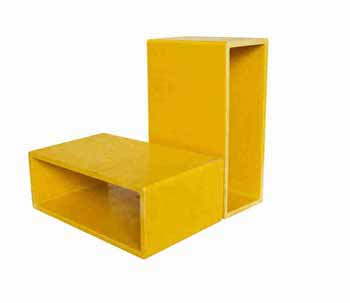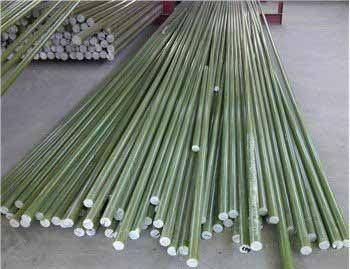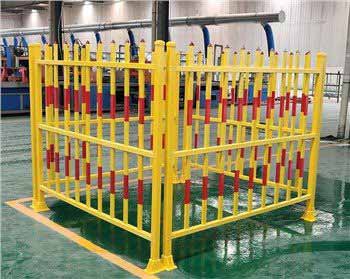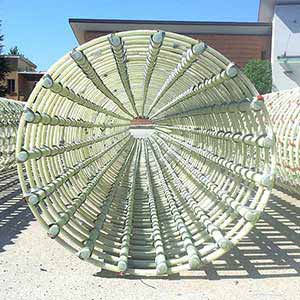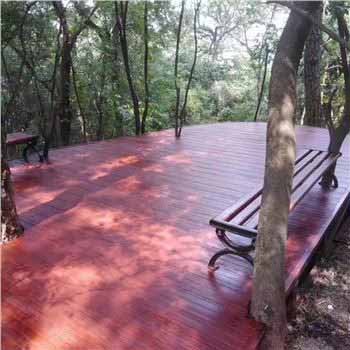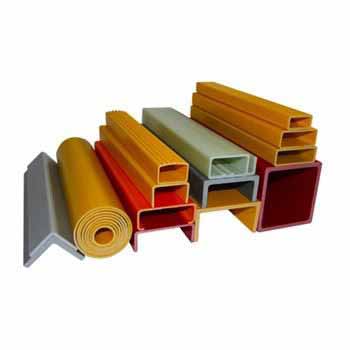The pultrusion molding process is to use the continuous roving, felt, tape or cloth soaked in the glue to form and solidify the continuous roving, felt, belt or cloth under the action of traction, and then to continuously produce profiles with unlimited length. Mass production of profiles and pipes with simple and regular shapes.
FRP pultrusion die is an important tool for pultrusion molding technology. The ratio of the cross-sectional area of the forming die to the cross-sectional area of the product should generally be greater than or equal to 10 to ensure that the die has sufficient strength and rigidity, and the heat distribution after heating is uniform and stable. The length of the molding die is determined according to the pulling speed and the curing speed of the resin gel during the molding process, so as to ensure that the product reaches the degree of demoulding and curing when it is pulled out. Generally, steel is chrome-plated, and the surface of the mold cavity should be smooth and wear-resistant, so as to reduce the friction resistance in pultrusion and improve the service life of the mold.
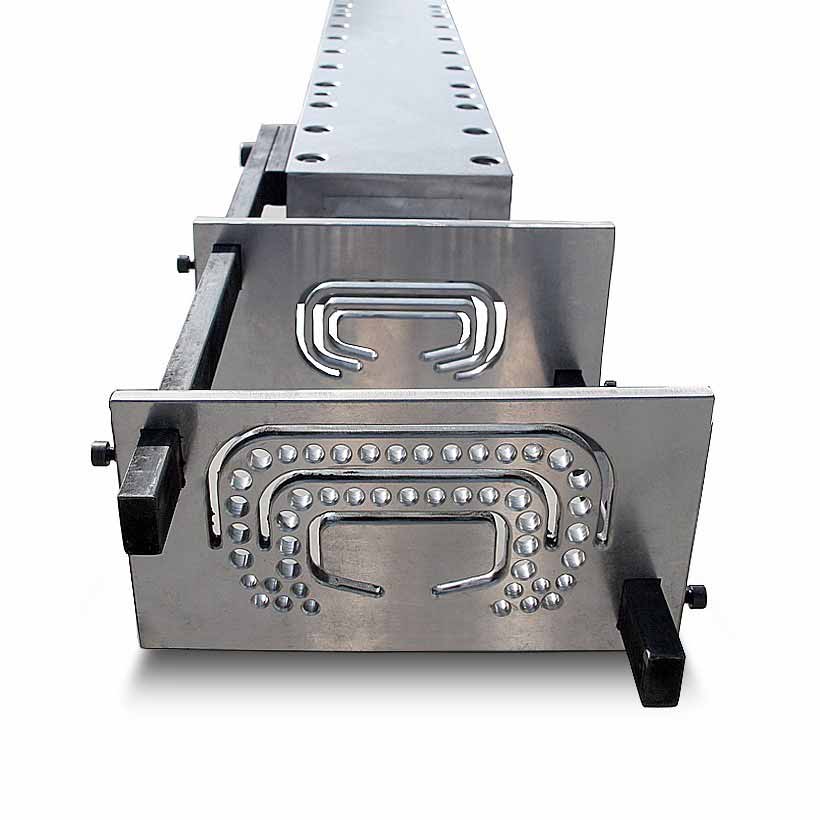
FRP pultrusion dies
FRP pultrusion dies are generally assembled from several dies. When designing the mold, the principle of parting surface selection is: under the premise of satisfying the mold manufacturing, the parting surface should be minimized to ensure tight joints. Among the three process parameters of thermal parameters, pulling speed and traction force, the thermal parameters are determined by the characteristics of the resin system, and are the primary factors that should be solved in the pultrusion process. The principle of determining the pultrusion speed is the gelation time at a given mold temperature to ensure that the product is gelled and solidified in the middle of the mold.
There are many constraints on the traction force, such as: it has a great relationship with the mold temperature and is controlled by the pultrusion speed. The increase of the pulling speed directly affects the second peak of the shear stress, that is, the shear stress at the breakaway point; the influence of the release agent is also a factor that cannot be ignored. In order to improve production efficiency, the pulling speed is generally increased as much as possible. This can reduce the shear stress of the mold and the surface quality of the product. For thicker products, you should choose a lower pulling speed or use a longer mold to increase the temperature of the FRP pultrusion mold. The purpose is to make the product solidify better, thereby improving the performance of the product.
When the glass fiber enters the forming mold after being impregnated with resin, the fiber bundle enters the mold under the traction of the forming machine. Because the fiber bundles at the entrance of the FRP pultrusion die are very loose, they often accumulate and wind at the entrance, resulting in fiber breakage. Furthermore, during the long-term use of the mold, due to the influence of accumulation and winding, it often causes serious wear and tear on the population, which affects product quality.
To solve this problem. The rounded corner of the 1/4 elliptical cross-section is reversed around the entrance of the mold. At the same time, the entrance adopts a tapered shape. The angle is preferably 5-8°, and the length is 50-100mm. This can greatly reduce the occurrence of fiber breakage and improve Improve the quality of FRP pultruded products.


